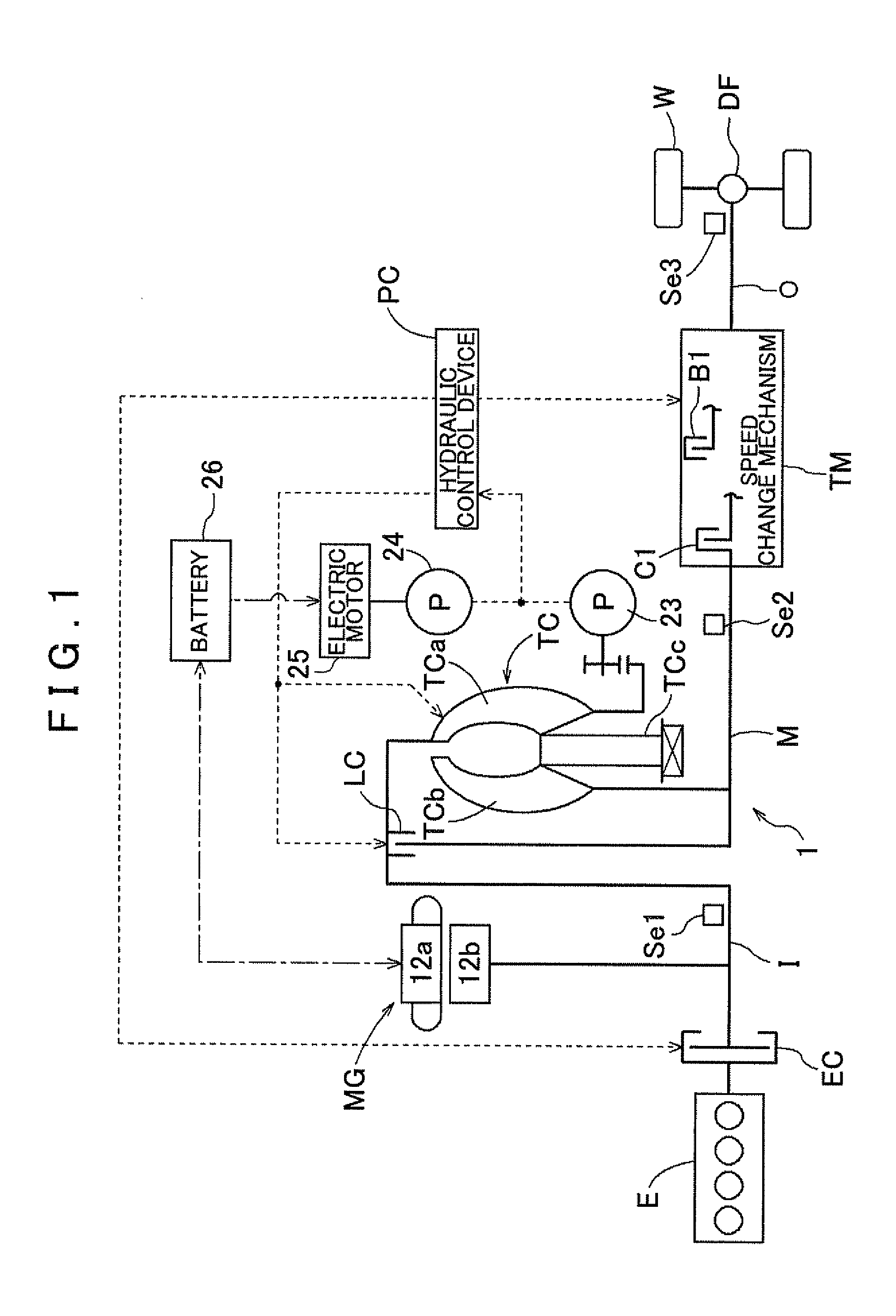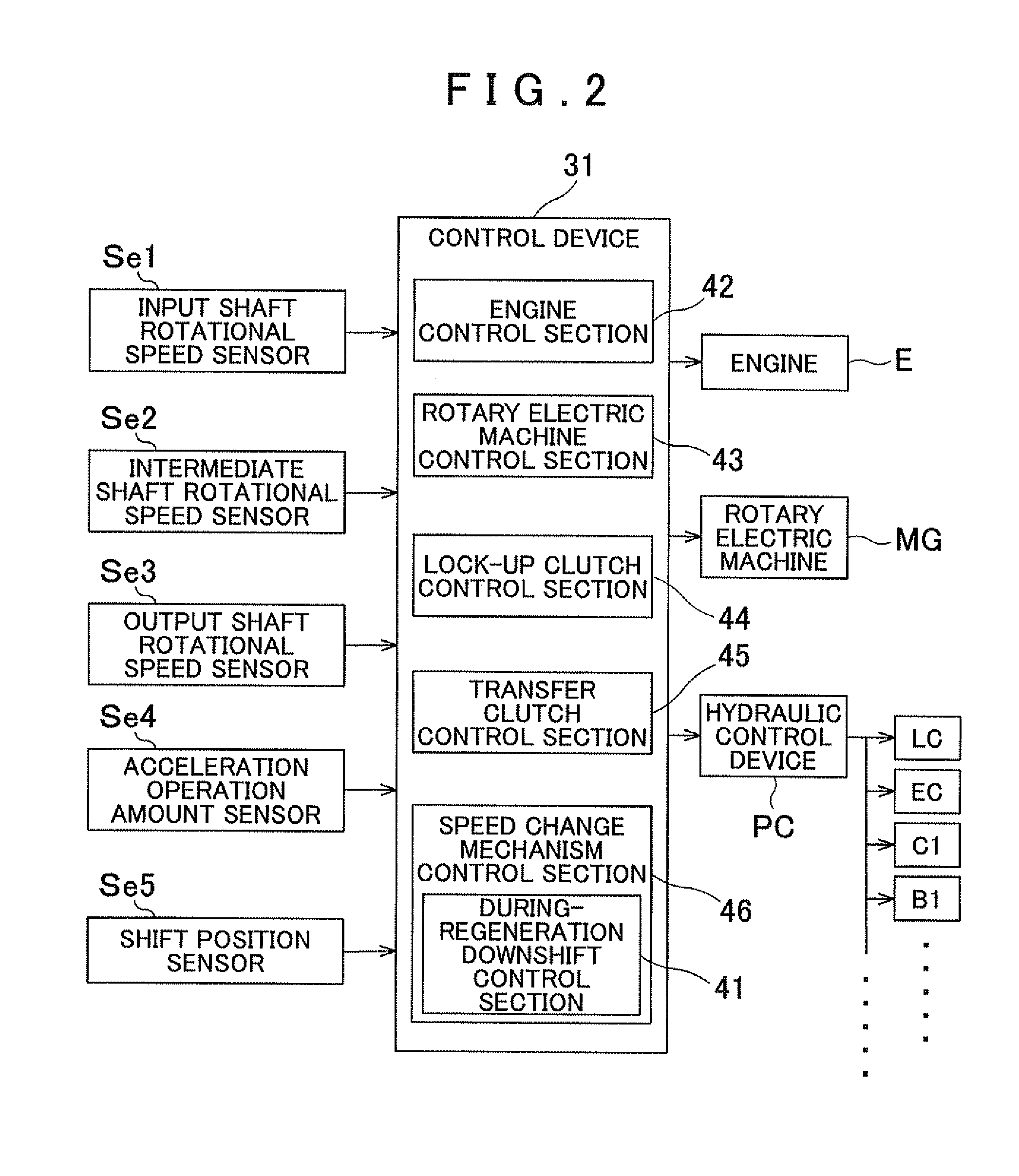Vehicle transmission device
a transmission device and vehicle technology, applied in the direction of vehicle position/course/altitude control, process and machine control, instruments, etc., can solve the problems of reducing the torque that can be transferred by the speed change mechanism, restricting the regenerative torque of the rotary electric machine, and reducing the regenerative torque. , to achieve the effect of reducing the braking speed of the vehicle, reducing the regenerative torque, and increasing the rotational speed of the input member
- Summary
- Abstract
- Description
- Claims
- Application Information
AI Technical Summary
Benefits of technology
Problems solved by technology
Method used
Image
Examples
Embodiment Construction
[0038]A vehicle transmission device 1 according to an embodiment of the present invention will be described with reference to the drawings. FIG. 1 is a schematic diagram showing the schematic configuration of the vehicle transmission device 1 according to the embodiment. As shown in the drawing, a vehicle incorporating the vehicle transmission device 1 is a hybrid vehicle including both an engine E, which is an internal combustion engine, and a rotary electric machine MG each serving as a drive force source. In the drawing, the solid lines each indicate a drive force transfer path, the broken lines each indicate a working oil supply path, and the dash-dotted line indicates an electric power supply path. As shown in the drawing, the vehicle transmission device 1 according to the embodiment is generally configured to include the engine E and the rotary electric machine MG each serving as a drive force source, and to transfer drive forces of the drive force sources to wheels W via a to...
PUM
 Login to View More
Login to View More Abstract
Description
Claims
Application Information
 Login to View More
Login to View More - R&D
- Intellectual Property
- Life Sciences
- Materials
- Tech Scout
- Unparalleled Data Quality
- Higher Quality Content
- 60% Fewer Hallucinations
Browse by: Latest US Patents, China's latest patents, Technical Efficacy Thesaurus, Application Domain, Technology Topic, Popular Technical Reports.
© 2025 PatSnap. All rights reserved.Legal|Privacy policy|Modern Slavery Act Transparency Statement|Sitemap|About US| Contact US: help@patsnap.com



